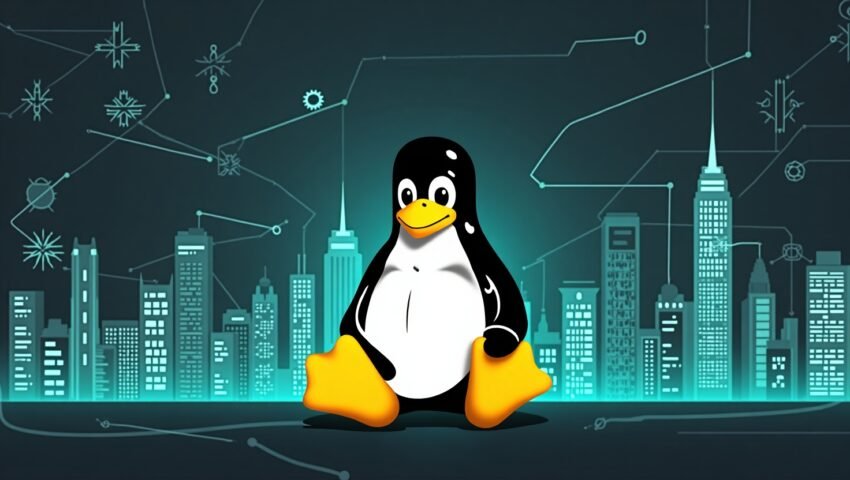How to Install Linux: Linux is a powerful, open-source operating system that offers flexibility, security, and a vibrant community of users. Whether you’re a tech enthusiast looking to explore a new OS or someone seeking an alternative to Windows or macOS, installing Linux is a great starting point. In this guide, I’ll walk you through the process of installing Linux on your computer, using a popular distribution like Ubuntu as an example. Let’s dive in! gaonsoftlink

Why Choose Linux?
Before we get started, here’s why Linux might be worth your time:
- Free and Open-Source: No licensing fees, and you can customize it to your liking.
- Security: Linux is known for its robust security features.
- Variety: With distributions (distros) like Ubuntu, Fedora, and Mint, there’s something for everyone.
Now, let’s move on to the installation process.
What You’ll Need
- A computer (laptop or desktop) with at least 4GB of RAM (8GB recommended).
- A USB drive (at least 4GB) or a blank DVD.
- An internet connection (optional but helpful).
- About 20-30GB of free disk space.
- A Linux distribution ISO file (e.g., Ubuntu, downloadable from ubuntu.com).
Step 1: Choose a Linux Distribution
There are hundreds of Linux distros, but for beginners, Ubuntu is a fantastic choice due to its user-friendly interface and extensive support. Other great options include Linux Mint (lightweight) or Pop!_OS (great for developers). Download the ISO file from the official website of your chosen distro.
Step 2: Create a Bootable USB Drive
To install Linux, you’ll need to create a bootable USB drive with the ISO file. Here’s how:
- Download a Tool: Use software like Rufus (Windows), Etcher (cross-platform), or the built-in “Startup Disk Creator” (Ubuntu).
- Insert Your USB Drive: Ensure it’s empty, as it will be wiped.
- Burn the ISO: Open your chosen tool, select the downloaded ISO file, choose your USB drive, and click “Start” or “Flash.” This process typically takes 5-10 minutes.
Step 3: Back Up Your Data
Before proceeding, back up any important files on your computer. While you can install Linux alongside your current OS (dual-boot), there’s always a small risk of data loss during partitioning.
Step 4: Boot from the USB Drive
- Insert the bootable USB into your computer.
- Restart your system and enter the BIOS/UEFI settings (usually by pressing a key like F2, F12, or Del during startup—check your manufacturer’s instructions).
- Set the USB drive as the first boot device in the boot order.
- Save changes and reboot.
Your computer should now load the Linux installer from the USB.
Step 5: Start the Installation
For Ubuntu, here’s what happens next:
- Try or Install: You’ll see an option to “Try Ubuntu” (test it without installing) or “Install Ubuntu.” Choose “Install.”
- Language and Keyboard: Select your preferred language and keyboard layout.
- Updates and Software: Check the boxes to download updates during installation and install third-party software (e.g., for graphics drivers).
- Disk Setup: Choose how to install Linux:
- Erase Disk: Replaces your current OS with Linux (only if you’re sure!).
- Install Alongside: Dual-boot with your existing OS (e.g., Windows).
- Manual Partitioning: For advanced users who want custom control. For beginners, “Install Alongside” is safest if you want to keep your current system.
- Set Location and User: Pick your time zone and create a username and password.
Step 6: Let It Install
Click “Install Now” and let the process run. This usually takes 10-20 minutes, depending on your hardware. Once it’s done, you’ll be prompted to restart your computer. Remove the USB drive when instructed.
Step 7: Welcome to Linux!
After rebooting, you’ll see the login screen. Enter your credentials, and voilà—you’re running Linux! Take some time to explore the desktop, update the system (via the terminal with sudo apt update && sudo apt upgrade in Ubuntu), and install your favorite apps.
Troubleshooting Tips
- No Boot Option?: Double-check your BIOS settings or remake the USB.
- Graphics Issues?: Boot with “nomodeset” (edit boot options by pressing ‘e’ at the bootloader) and install proper drivers later.
- Need Help?: Linux communities like Ask Ubuntu or Reddit’s r/linux are goldmines of support.
Final Thoughts
Installing Linux might seem daunting at first, but it’s a rewarding experience that opens up a world of possibilities. Whether you’re using it for programming, privacy, or just curiosity, Linux offers a fresh perspective on computing. So grab that USB drive, pick a distro, and start your Linux journey today!
How to Install Linux: A Step-by-Step Guide for Beginners – https://linuxhowto.org
